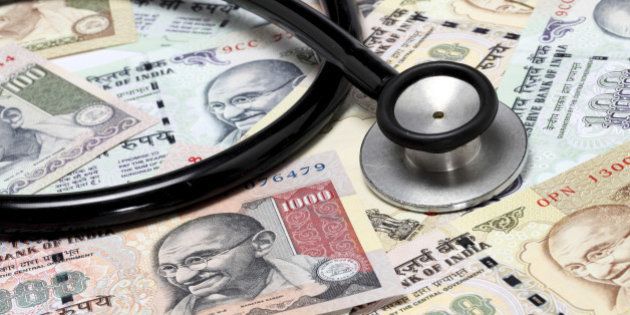
India and the US differ widely when it comes to healthcare. With the perspective of outcomes, in India the life expectancy at birth is 63 years for men and 66 years for women, while that for US is 76 years for men and 81 years for women. Children under the age of five are also a lot more likely to die in India than in the US.
As this article in Forbes explains, India is still struggling with health basics.
"India faces a growing need to fix its basic health concerns in the areas of HIV, malaria, tuberculosis, and diarrhoea. Additionally, children under five are born underweight and roughly 7% (compared to 0.8% in the US) of them die before their fifth birthday.
This year's Budget has come under criticism for not addressing systemic problems adequately, emphasizing instead health insurance schemes and public-private partnerships.
Comparing the healthcare systems of two of the world's biggest democracies--the United States and India--highlights changes we can make to improve the access and outcomes in our own country while also bringing to the fore some of our potential strengths. The big question, of course, is whether the decision-makers are listening.
Let's look at the key areas of differences between the two countries.
1. Public health scenario
India lags far behind developed nations in the public health arena, with clean drinking water, adequate nutrition, sanitation and access to healthcare being long-standing challenges. This year's Budget, too, has come under criticism for not addressing systemic problems adequately, emphasizing instead health insurance schemes and public-private partnerships.
The picture is far rosier in the US, where per person healthcare expenditure is the highest in the world. Successive governments have consistently prioritized healthcare reforms.
2. Nature of healthcare
The Indian healthcare system can be described as 'mixed'. While the government provides healthcare at primary, secondary and tertiary levels, there is a burgeoning number of private hospitals with better medical facilities. Unfortunately, most are too expensive for the average citizen. Healthcare is taken far more seriously in the US, as we have already seen.
Notably, the Patient Protection and Affordable Care Act (PPACA), better known as 'Obamacare', was signed into a law in 2010 with a mission to reform the health insurance sector and to provide more Americans accessible, affordable and quality healthcare services. Consumer protections, regulations, subsidies, taxes, insurance exchanges and other such reforms go into making the system work. Similarly in India, a central initiative by the government will help make healthcare accessible to the vast population.
In India the total expenditure on healthcare as percentage of GDP is just 4%, while in the US it is 17%.
3. Vast difference in spends as % of GDP
In India the total expenditure on healthcare as percentage of GDP is just 4%, while in the US it is 17%. According to World Health Organization (WHO) data for countries performing best in the healthcare sector, the US ranks 37, while India stands at 112. While the US can still improve and learn more from the top performers, India still has a long way to go.
4. Out of the pocket expenditure
A whopping 70% of the Indian population pays out of their own pocket for medical expenditures. This typically strengthens the financial mechanism of the insurance sector. In the US, the out of the pocket expenditure is much lower at 10-12%.
5. Health insurance is mandatory in the US, unlike India
In the US, it's mandatory to get health insurance and you have to pay a penalty if for some reason you choose not to get it. Employers in the US, as per government guidelines, are supposed to provide health insurance to their employees. None of the above holds true in India, where the provision or purchase of health insurance is up to the discretion of employers or individuals.
In the US, it's mandatory to get health insurance and you have to pay a penalty if for some reason you choose not to get it.
6. Scope of coverage
In the US, health insurance cover is generally comprehensive, and includes everything from consultations for, say, a fever to hospitalization. However in India, visits to physicians are not covered under insurance. Only 30 days pre-/60 days post-hospitalization are covered, depending on terms of the policy. The other expenses are to be borne by the individual.
7. Premium charges
Since a larger number of people are covered under health insurance policies, with larger scope and a much higher standard of living, the premium rates are generally higher in the US. In India, since the health insurance policies are taken by a lesser percentage of the population and owing to cut-throat competition amongst various insurance companies, the premiums are much lower. For instance, a 30-year-old Indian male needs to pay around ₹ 500/month to get ₹ 5 lakh health insurance coverage. The numbers differ with different healthcare insurance providers, but you can get decent coverage for about ₹ 10,000 each year. Despite this, medical insurance has a relatively poor reach.
8. Differentiation in states
The US is a federation of various states, each of which has different regulations. This also has an impact on the health insurance rules and provisions, which differ from state to state. India, on the other hand, is a republic and the same rules apply across all states. Therefore a health insurance policy will have the same rules and regulations across the country.



Contact HuffPost India
Also see on HuffPost:
